
Knobcone Pine Pinus attenuata
Knobcone Pines are tough trees, often growing in the poorest soils and so well adapted to fire that they are dependent on fire for the overall health of the species. Mature trees vary greatly in size from 25 to 75 feet tall depending on soils and other conditions, although I have never seen Knobcones larger than 35 feet in the Santa Lucia Range.
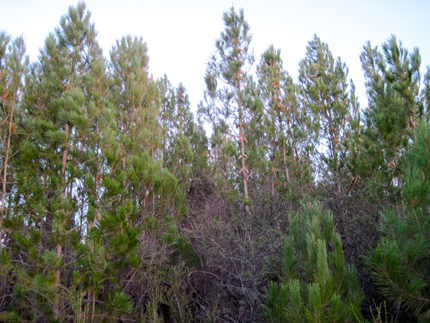
A stand of tightly spaced Knobcone Pines all about the same age. Young tree often are conical in shape with a straight trunk.
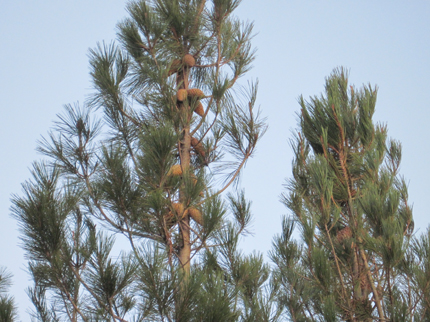
Each year's new growth is marked by a circle of cones.
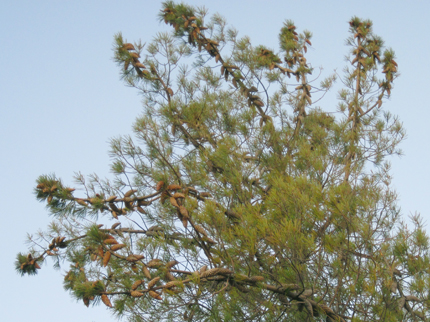
Mature Knobcone Pines are often irregular in shaped with open crowns.
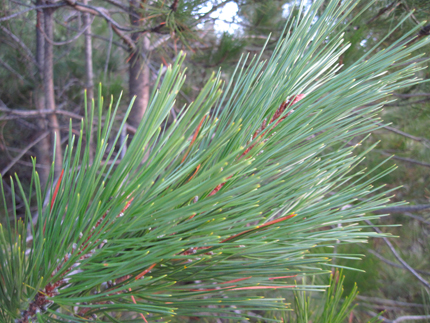
Needles are in bundles (fascicles) of three and range from 3 to 5 inches long.
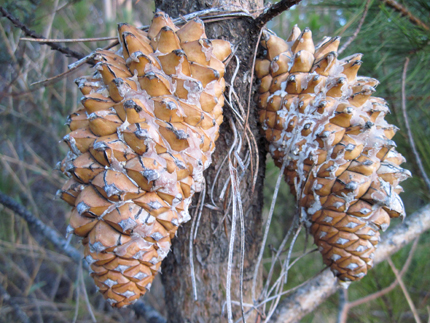
The cones are what make Knobcones stand out as they have numerous tighly closed cones on the main trunk as well as each major branch. Cones range from 3 to 5 inches long and are about half as wide as they are long.
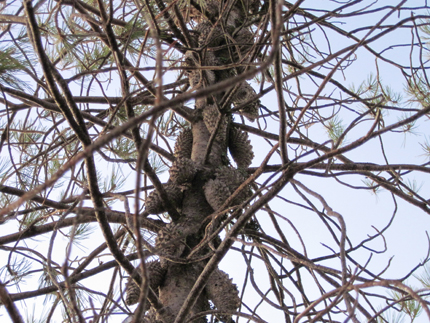
The cones grow from the branch or trunk in groups of 3 to 5 encircling the branch with the tips of the cone pointed downwards.
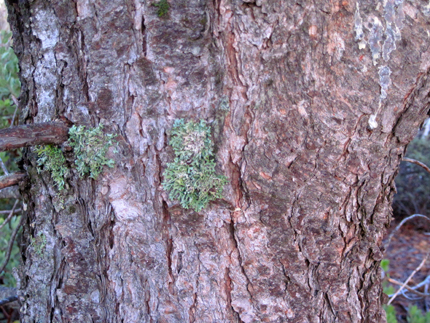
The bark of a mature Knobcone Pine is dark gray to rust brown, scaly, and furrowed. On young trees the bark is gray to ligth brown and relatively smooth with light scales.
Fire and Knobcones
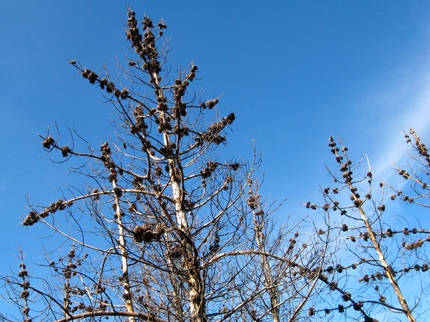
Knobcone Pines one year after the Basin Complex Fire. Notice how the cones are now open, but still persistent on the tree.
Knobcone pine seed cones stay tightly closed until the reach a temperature of about 200 degree F at which point the sap in the cone will begin to loosen. Knobcones need fire to open and let loose their stored seeds.